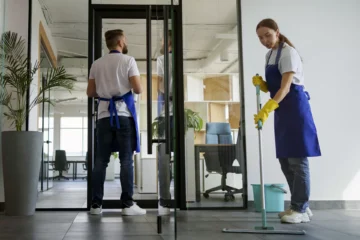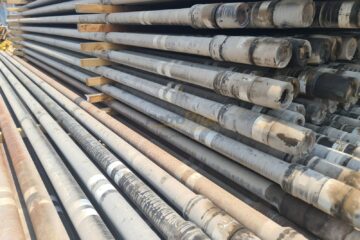Plunge pools are becoming increasingly popular in Brisbane due to their compact size, versatility, and the relaxing experience they offer. But one of the most common questions homeowners ask is: “How much does it cost to install a plunge pool in Brisbane?” In this guide, we’ll explore the various factors that influence the cost and help you make an informed decision when planning your plunge pool project.
Factors That Impact the Cost of a Plunge Pool in Brisbane
The cost of installing a plunge pool in Brisbane can vary based on several factors, including the size of the pool, the materials used, and the specific design requirements. Here are some key factors to consider:
1. Pool Size and Shape
The size and shape of the plunge pool play a significant role in the overall cost. A small plunge pool will generally cost less than a larger one, but adding custom shapes or features can increase the price. Most plunge pools in Brisbane are designed to fit in small backyards, making them a space-efficient option. However, even a smaller pool can become a focal point in your backyard with the right design and landscaping.
2. Material Choices: Fibreglass vs. Concrete
When it comes to choosing between a fibreglass plunge pool and a concrete plunge pool, the material you select will significantly impact the cost. Fibreglass pools are pre-fabricated, making them quicker to install and generally more affordable. A fibreglass plunge pool typically requires less site preparation and fewer labour hours, making it a cost-effective option.
On the other hand, concrete plunge pools offer more flexibility in terms of custom designs, but they tend to be more expensive. The concrete plunge pool cost includes the additional labour and materials required to build the pool on-site. While concrete pools may offer more design options, the price for these concrete pools can be higher due to the significant investment in time and materials.
3. Site Preparation and Installation
The condition of your property can also impact the cost of installing a plunge pool. If your backyard requires extensive excavation or leveling, this can increase the overall cost of the pool installation. It’s essential to assess the site before starting your pool project to avoid unexpected additional costs.
Other factors that can impact pricing include the need for a private certifier and any specific design requirements for your property. Depending on your location and the complexity of the installation, you may also incur extra costs related to permits, fencing, and other site preparations.
4. Features and Add-Ons
Modern plunge pools can include a range of features such as swim jets, pool heating, and water features, all of which can increase the cost of your plunge pool project. While these features add value to your dream pool, they come at an additional price. Pool tiles, for example, can elevate the aesthetic of your pool but may increase the overall budget, especially for custom designs.
Adding glass pool fencing and pool covers are other essential elements that may contribute to the plunge pool cost. While these features ensure safety and functionality, it’s important to factor them into your initial investment.
5. Pool Heating and Maintenance
If you plan to use your plunge pool year-round, investing in a reliable heating system is essential. Pool heating systems vary in cost, depending on whether you choose solar, gas, or electric options. While cold water plunge pools are popular for their therapeutic benefits, having a heating option allows you to enjoy your pool in cooler months.
Additionally, you’ll want to consider the ongoing maintenance costs. A small plunge pool generally requires less maintenance than a larger pool, making it a low-maintenance option. This means less time cleaning and balancing chemicals, which can save you money over time.
Pool Installation Process and Other Costs
Once you’ve selected your pool size and materials, the next step is the installation. The pool installation process typically includes site preparation, excavation, delivery of the pool (if it’s fibreglass), and the actual construction of the pool (for concrete). Depending on your design choices, this process can take anywhere from a few days to several weeks.
It’s important to note that there are often other costs to consider when planning your plunge pool. These might include landscaping, surround tiles, and lighting for your pool area. Ensuring all elements are in place will create a harmonious look that ties your backyard pool into your existing entertainment area.
Cost-Saving Tips for Installing a Plunge Pool
When it comes to installing a plunge pool in Brisbane, there are several strategies to help you save money without compromising on quality or design. Here are some cost-saving tips to consider:
1. Choose a Fibreglass Plunge Pool
If you’re working with a tight budget, opting for a fibreglass plunge pool can be a more affordable option compared to a concrete plunge pool. Fibreglass plunge pools come pre-fabricated, which reduces labour costs and the time needed for installation. In addition, fibreglass pools typically have standard shapes that can fit into many backyard spaces, offering a cost-effective solution for homeowners.
2. Focus on Essential Features
While it can be tempting to add all the latest pool features, such as swim jets, pool heating, and intricate water features, focusing on the essentials will help keep costs down. Consider prioritizing key elements that improve functionality and energy efficiency, such as pool covers or solar-powered heating systems, which can help you save money on ongoing energy costs in the long run.
3. Plan for Future Upgrades
If you’re interested in adding extra features to your plunge pool but are concerned about the initial cost, you can always plan for upgrades later. This approach allows you to stick to your budget while still enjoying your new pool. For example, you could install a basic pool size with essential features now, and add features like glass pool fencing or a sophisticated water feature at a later date when you have more flexibility in your budget.
Breakdown of Plunge Pool Costs in Brisbane
The total cost of installing a plunge pool in Brisbane can vary depending on several factors, including size, materials, features, and installation requirements. Below is a general breakdown of what you can expect:
1. Fibreglass Plunge Pools
As mentioned earlier, fibreglass plunge pools are usually more affordable. On average, you can expect a fibreglass pool to cost between AUD $20,000 and $35,000, depending on the pool size, shape, and additional features. These pools often include standard inclusions such as surround tiles and pool add-ons like pool heating or pool covers.
2. Concrete Plunge Pools
Concrete plunge pools are typically more expensive than fibreglass pools due to the higher cost of materials and labour. On average, the concrete plunge pool cost can range between AUD $30,000 and $50,000, depending on the complexity of the design and custom features. Concrete pools also require more extensive site preparation, which can add to the overall cost.
3. Other Costs to Consider
In addition to the base cost of your pool, there are other costs that can affect the final price of your project. These include:
- Pool covers for safety and energy efficiency
- Pool tiles for aesthetics and durability
- Glass pool fencing for safety and visual appeal
- Heating systems for year-round comfort
- Private certifier fees and council approvals
- Ongoing maintenance costs, including cleaning and chemical treatments
Making an Informed Decision
When deciding on a plunge pool or small plunge pool in Brisbane, it’s important to weigh all the factors that influence the cost, such as the material, size, and additional features you desire. While a concrete pool offers more customization and durability, a fibreglass pool provides a quicker and more affordable installation option.
Additionally, consider the layout of your backyard and the intended use of your pool. If you have a small backyard, a plunge pool may be the perfect space-saving solution, while homeowners with more space might consider a larger pool for recreational swimming or swimming laps.
Conclusion
In summary, the cost to install a plunge pool in Brisbane depends on several factors, including the size, material, and features you choose. Whether you opt for a fibreglass or concrete plunge pool, there are ways to manage costs while still creating a relaxing and stylish backyard pool. With the right planning and budgeting, you can enjoy the benefits of your dream pool without breaking the bank.
Keep an eye for more news & updates on DiscoverTribune!




